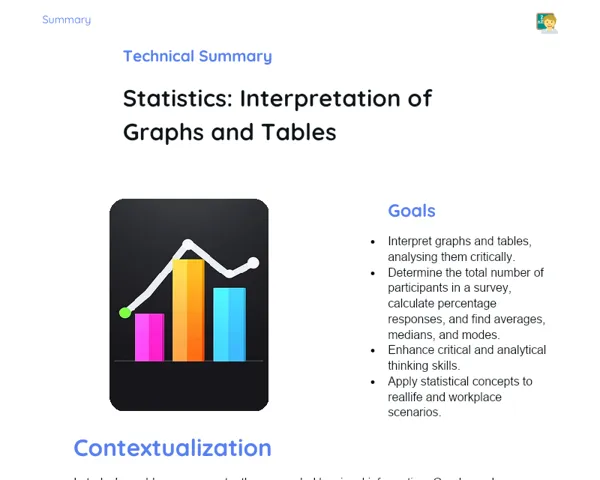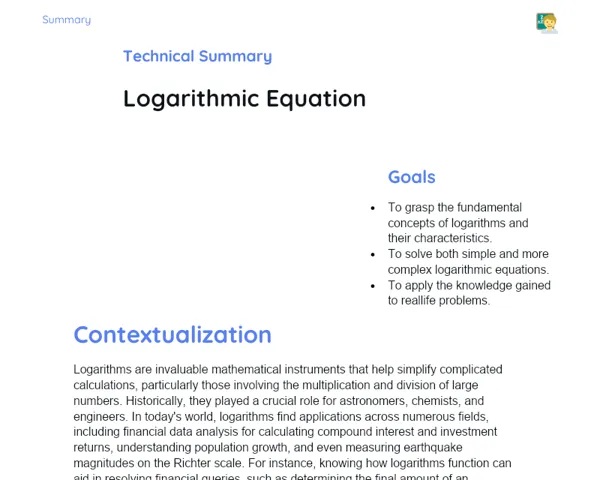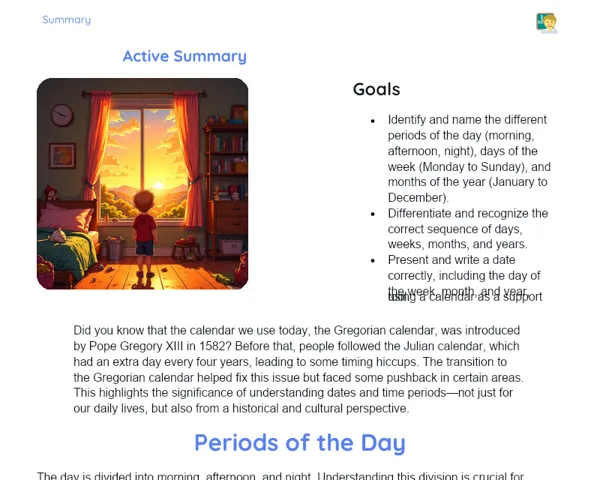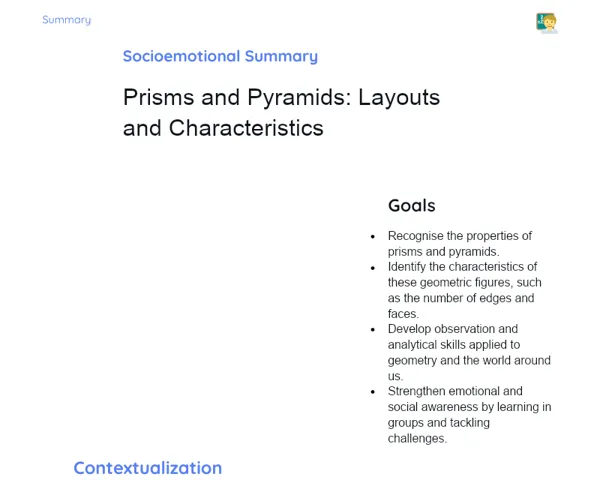Objectives
1. 🎯 Understand and apply the concept of orthographic views to draw three-dimensional figures in two dimensions, focusing on geometric shapes like cubes.
2. 🎯 Develop spatial visualization skills and logical reasoning when interpreting and creating orthographic projections.
3. 🎯 Implement the concept of orthographic views in a practical sense, such as in creating technical drawings that are vital in fields like architecture and design.
Contextualization
Did you know that grasping orthographic views is beneficial not just for mathematicians, but also for artists, engineers, and architects? Take architects, for instance; when they design a new building, they rely on orthographic views to illustrate how different sections of the structure would appear from various angles. These drawings are fundamental to ensuring that the build goes smoothly, avoiding costly mistakes during construction. This highlights how mathematics plays a significant role in real-life scenarios, directly influencing our environment!
Important Topics
Orthographic Views
Orthographic views are two-dimensional representations of a three-dimensional object viewed from specific angles, such as the front, side, and top. These projections are crucial for technical drawings and modelling across diverse industries, assisting in visualising details that might be missed from a single perspective.
-
Front, side, and top: Each view depicts the object as observed from a perpendicular angle, making it easier to represent its dimensions and details.
-
Importance in architecture and engineering: Experts use orthographic views to design buildings, machinery, and products, ensuring accuracy and functionality.
-
Enhances comprehension: By breaking an object down into multiple views, it becomes more straightforward to grasp its shape, measurements, and proportions, which is essential in manufacturing and construction.
Area Calculation in Orthographic Views
Calculating the area of an orthographic view involves determining the area of the surfaces represented from each dimension of the object. This is especially useful in designing work surfaces for machinery or furniture, where each viewpoint corresponds to a practical surface to be utilised.
-
Relation to plane geometry: Each view can be regarded as a polygon in plane geometry, aiding in area calculation.
-
Application in product design: Ensures surfaces are correctly designed, helping to avoid any unnecessary wastage of materials.
-
Essential for space optimization: In architecture and interior design, calculating areas in orthographic views is crucial for making the best use of available space.
Spatial Visualization
The ability to visualise spatially allows people to conceptualise three-dimensional objects based on their two-dimensional drawings. This skill is fundamental for understanding and utilising orthographic views effectively, as it supports interpretation of how different components of an object relate spatially.
-
Development of cognitive skills: Enhances the capacity to tackle complex spatial challenges and nurtures logical reasoning.
-
Crucial for technical professions: Indispensable in fields such as engineering, architecture, and industrial design.
-
Encourages creativity: Fuels the generation of fresh ideas and innovative solutions by allowing for the mental visualisation of concepts in three-dimensional space.
Key Terms
-
Orthographic Views: Two-dimensional projections of a three-dimensional object from specific angles, facilitating visualisation and analysis.
-
Reference Plane: An imagined surface that acts as the foundation for projecting orthographic views.
-
Intersection: The point where two lines or planes converge, essential for ensuring the accuracy of projections.
For Reflection
-
How can orthographic views shape the way we design and engage with daily objects?
-
In what ways will the ability to envision 3D objects from 2D drawings assist you in your future career or in everyday tasks?
-
Pick a common object nearby and attempt to draw its orthographic views. How might this exercise enhance your understanding of its shapes and functionalities?
Important Conclusions
-
We reviewed how orthographic views are vital for visualising three-dimensional objects in two dimensions, underscoring their relevance in fields like architecture, engineering, and design.
-
We explored the significance of area calculation in orthographic views, a foundational aspect for projects needing precision in measurements and efficient space usage.
-
We discussed how spatial visualisation—the ability to picture three-dimensional objects from two-dimensional projections—is crucial, not just in academic fields, but also in a myriad of careers and practical everyday contexts.
To Exercise Knowledge
- Pick a three-dimensional object in your home and attempt to sketch its orthographic views. 2. Design a small item of furniture, like a pencil holder, and create orthographic views to familiarise yourself with how these drawings are applied in manufacturing. 3. Use building blocks or recyclable materials to construct a simple object and then draw its orthographic views to sharpen your spatial visualisation skills.
Challenge
Designer Challenge: Craft a mini bookshelf using paper and pencil. Create accurate orthographic views of your design and then build a miniature version from recyclable material. Compare your final product with the drawn views to see how effectively you visualised and planned the project!
Study Tips
-
Practice sketching orthographic views of objects around you to boost your spatial visualisation capabilities.
-
Utilise 3D modelling tools or technical drawing software to create and manipulate objects in orthographic views, which aids in a deeper understanding of the concept.
-
Chat with friends or family about how they incorporate orthographic views into their work or projects, and venture to apply these insights in your own activities.



